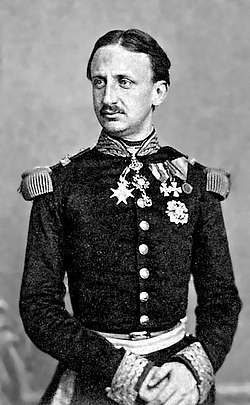| King of the Two Sicilies | |
|---|---|
 Royal Coat of arms | |
 Francis II , last king of the Two Sicilies | |
| Details | |
| First monarch | Ferdinand I |
| Last monarch | Francis II |
| Formation | 1816 |
| Abolition | 1861 |
| Residence | |
| Pretender(s) | Disputed:
|
The Kingdom of the Two Sicilies in Southern Italy was ruled by monarchs from its establishment in 1816 to its incorporation into the Kingdom of Italy in 1861.



